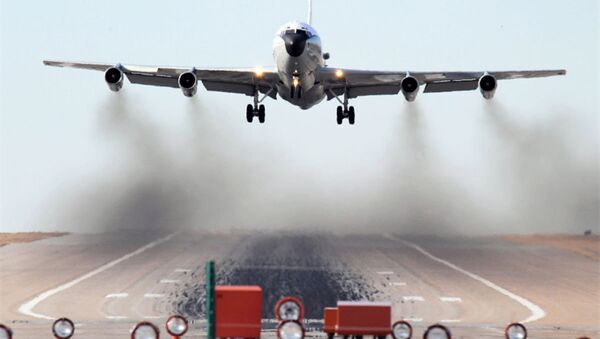In 2016, the USAF spent $10.1 million on two "Harvester Particulate Airborne Collection System" kits that can be strapped to WC-135 aircraft, Susan Romano, a spokesperson for the Air Force Technical Applications Center, said recently.
During a Senate Armed Services Committee meeting in April, Air Force Chief of Staff General Dave Goldfein said that the force's WC-135 planes, which have the ability to check the atmosphere for the telltale signs of nuclear explosions, date from the mid-1960s and are getting old, Defense News reported.
"Our mission capable rates, and more importantly our aircraft availability rates to go do this mission, are much lower than not only the secretary of defense but the combatant commander's requirements for that mission," Goldfein said. The Harvester kits,developed by the Sandia National Laboratory, may thus give the WC-135 planes the boost they need.
The kit was also tested on Customs and Border Protection MQ-9 Reaper drones in 2014, Romano said. The two kits that have since been procured are currently undergoing the acceptance process. They are expected to become operational in fiscal year 2019.
The harvester kit is made up of two sampling pots that can collect radioactive particles as well as a gamma radiation sensor that can direct the aircraft to a radioactive source. It also includes radiation protection gear as well as other equipment that can be used to analyze nuclear particles in air and on the ground, Romano reported.
"Air passes through the samplers, each about the size of a small snowmobile, as the Reaper cruises at 200 mph. This rams particles into filter paper like light hitting a photographic plate, causing the particles to stick to the filter fibers. A separate radiation sensor analyzes the filter in real time to estimate the type and quantity of radioactive particles collected. More extensive examination of the filters occurs after the aircraft has landed," a 2013 Sandia Labs News Release stated.


